Five ways World of Warcraft changed MMOs forever
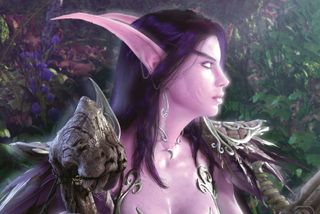
Five ways World of Warcraft changed MMOs forever
There are two kinds of revolutionary game: the ones that create genres, and the ones that change genres forever. In the former category you’ll find Wolfenstein 3D, Herzog Zwei, Ultima Online; in the latter Half-Life, Dune 2, World of Warcraft. These games aren’t just influential – they fundamentally alter the expectations of players and developers. After WoW, the MMO genre had a shape and a set of principles that would define millions upon millions of hours of playtime over the course of the next decade. After WoW, it wasn’t possible to make an MMO in the west without explicitly or implicitly commenting on World of Warcraft.
Not all of Blizzard’s ideas were radical or even original, but in combination they mapped out a new model for online RPGs. WoW marked the ascendancy of the themepark, confining the notion of a simulated online world to niche games and EVE Online. Ultima Online offered players the promise of dragon-slaying adventure and life as a baker in equal proportion: World of Warcraft established, definitively, that the future of the genre was the former. Here’s how Blizzard did it.
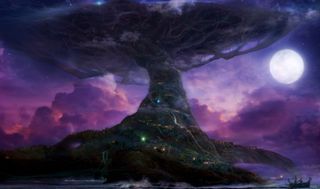
The flavour of the world
World of Warcraft inherited – as you might expect – Warcraft’s look and tone, and that meant a certain amount of colour, humour, and visual abstraction. Naturally, it was divisive. EverQuest might have departed from Ultima Online’s commitment to simulation, but the notion remained that these were (relatively) realistically-depicted places. World of Warcraft’s lore is taken seriously and its locations are characterful, but it was also clearly a gameworld designed to entertain. This isn’t a criticism, necessarily – Azeroth is one of the most extraordinary detailed game spaces ever created, and Blizzard’s talent for environmental storytelling was and is a joy. But it marks a philosophical change that has been enormously influential: “you are not creating a real place,” was World of Warcraft’s message to developers. “You are creating a compelling image.”
Attached to this is the prevalence of humour. Blizzard has always had very funny writers, and their influence on WoW resulted in a game operating on multiple levels. The overarching narrative is epic, operatic and taken seriously, but a majority of quests take a different approach. Perhaps wisely, Blizzard realised that filling out a list wasn’t going to work as a vector for emotional storytelling. They also figured out that if you are going to spend thousands of hours in a game, tonal variety is key: the real world is silly sometimes and MMOs should be too.
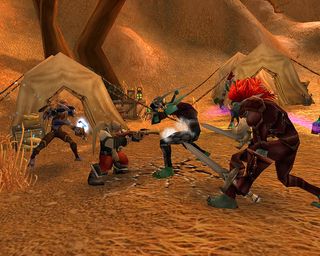
Levelling and quests
The notion of levelling through experience rewards granted by completing quests was one of World of Warcraft’s most important innovations. Previously, quests and levelling had an indirect relationship with one another: you’d get experience for killing monsters, but the narrative you were following had more to do with the story of the world or securing a powerful item. It was always more efficient to set up camp near a monster spawn and level up there than to move about the world.
WoW’s enormous number of relatively straightforward quests turned levelling into a shopping trip. Stemming from this is the notion of towns as quest ‘hubs’, quest text as functionally disposable, and the process of ‘tagging’ monsters so that other players can’t steal your kill (and your quest credit.) It created a mobile population of players where previously the norm had been to remain stationary. As a consequence, competition for the best spots became a thing of the past.
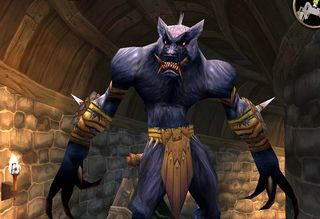
Instances
It’s hard to imagine a time before instancing. Similar to the game’s egalitarian quest system, giving every group of players their own version of a dungeon utterly changed the role of these dangerous places. Dungeons were no longer holes in the ground that might have some scary monsters in them: they were planned and meticulously constructed individual co-op challenges, designed for specific numbers of people and readily accessible whenever you wanted to attempt a run. No more queuing for the best spawns, no more ‘zerging’ a dangerous place with three times as many players as are necessary to beat it.
Dungeons that act as self-contained combat puzzles are a core part of MMO design in 2014, and that stems directly from Blizzard’s decision to instance them off from the rest of the game. This plays a role in the segmentation of MMOs into areas with distinct purposes, again shifting the genre away from the ‘online world’ concept that kicked it off in the first place. By establishing that one valley might be for team capture the flag, another for levelling and a third for group challenges, Blizzard established the basic principle of the themepark MMO: that players should be free to have whatever kind of fun they want, whenever they want to have it.
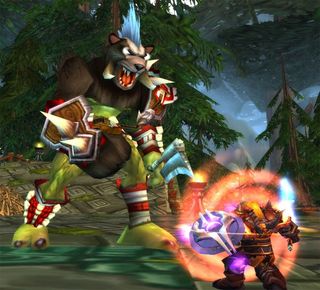
Talents
If you’ve ever played an MMO where your character has approximately 31 points to divide between upgrades split across three ‘trees’ based on their class, thank World of Warcraft – and, by extension, Diablo II. Of all of World of Warcraft’s ideas that have been adopted by other games, the original talent system is one of the rare ones that has been adopted wholesale – to the extent that Star Wars: The Old Republic uses it exactly as it was when World of Warcraft launched.
On the other hand, World of Warcraft’s new talent system – which stresses player preference over hard specialisation and provides plenty of room to change your mind – follows after MMOs like the Guild Wars series that rejected the tendency of the talent system to produce ‘flavour of the month’ builds that players felt bound to adhere to.
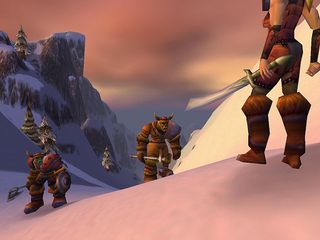
Raids and gear
Raiding existed before World of Warcraft, but Blizzard established a structure for large group adventures – and the busywork that occurs between them – that effectively created a new game in its own right. No more haphazard attempts at rare bosses here: WoW’s original raids were tough as steel, designed for a fixed number of players, and granted rewards to only a few. Developing strategies to maximise the intake of new items formed the basis of a logistical challenge that only the very best guilds could crack, and the need to fairly distribute scant loot created economies outside of the game – raid ‘points’ that rewarded participation and guaranteed that you’d get a good item eventually. Many of the systems that players created to handle World of Warcraft’s toughest content would eventually be folded into the game – and into its competitors – as full-fledged features.
The way equipment was conceived changed, too. World of Warcraft pioneered the use of tiers as a method of dividing up gear – and ultimately, raids themselves – into escalating power brackets. This is a factor in World of Warcraft’s other great global trend, which is the growing size and complexity of the shoulderpads worn by MMO characters the world over.

Joining in 2011, Chris made his start with PC Gamer turning beautiful trees into magazines, first as a writer and later as deputy editor. Once PCG's reluctant MMO champion , his discovery of Dota 2 in 2012 led him to much darker, stranger places. In 2015, Chris became the editor of PC Gamer Pro, overseeing our online coverage of competitive gaming and esports. He left in 2017, and can be now found making games and recording the Crate & Crowbar podcast.
Most Popular


